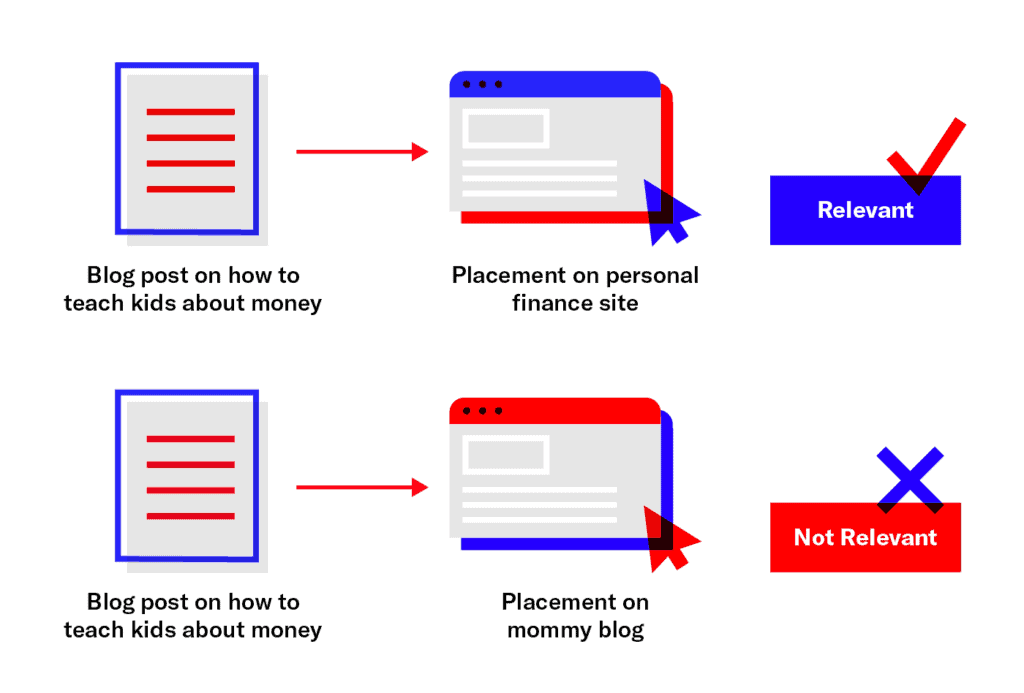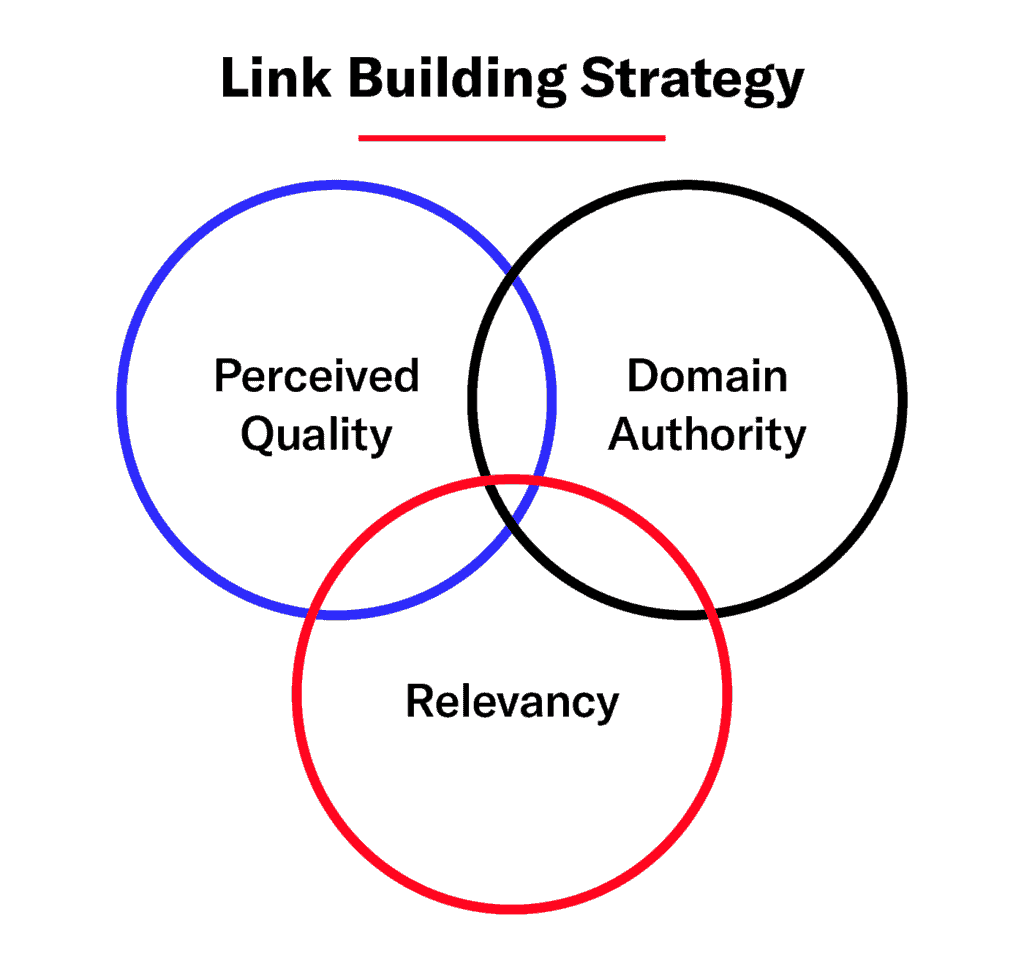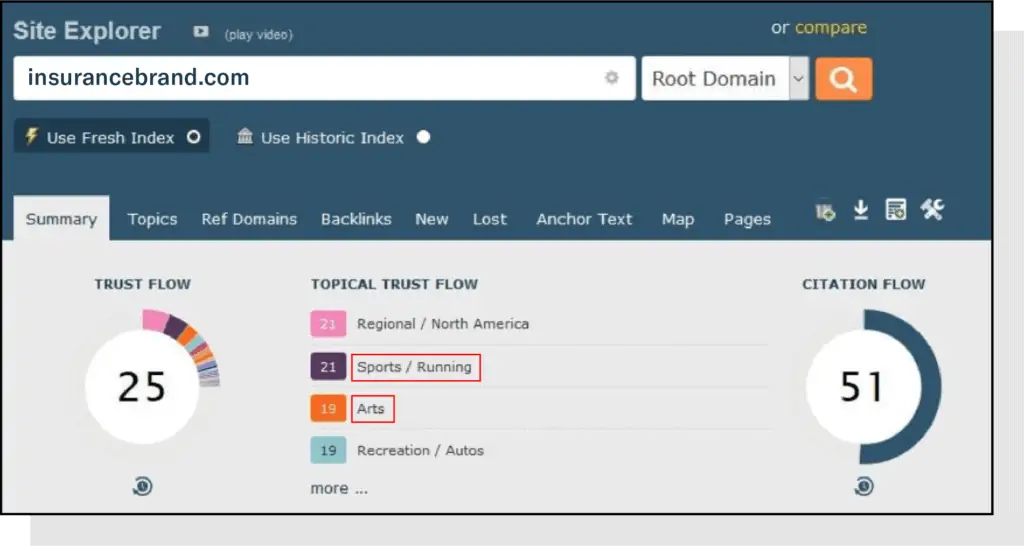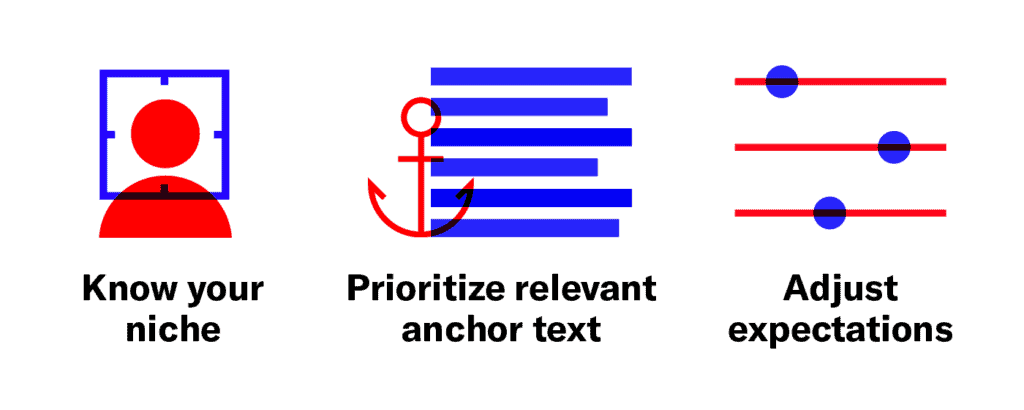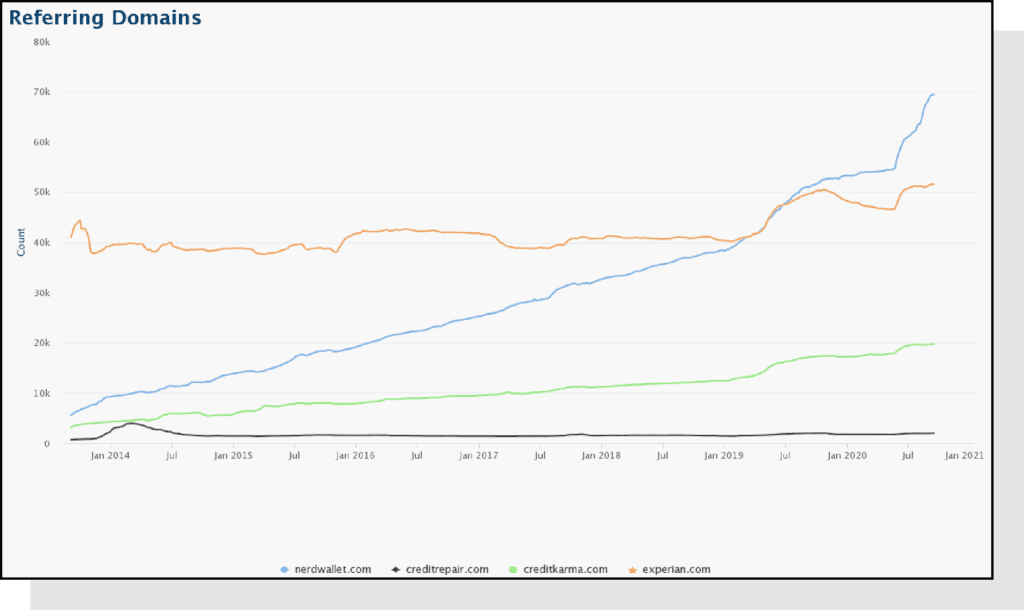Simply building a lot of links is no longer good enough.
Following the Penguin update, it no longer works to build links in a vacuum—without thinking critically about the sites you’re earning placements from and whether they make sense for your brand’s backlink profile.
As content marketers, we brainstorm content by mapping it to linkable outreach markets. In the past, we’d brainstorm content using a simple formula: brand area of focus + outreach market.
But this formula can sometimes lead people in the wrong direction, diluting your brand’s authority by creating content targeted at markets that are not topically relevant for your business or your brand.
If you’re wondering what your site’s link relevancy looks like—or think past link building strategies may have strayed a bit from your site’s core competency areas—have no fear. The following tips will help you learn how to determine your site’s link relevancy and learn to consistently build links to sites that make the most sense for your business.
Before diving in, additional thanks to Taylor Covington of The Zebra team who provided us with relevant data, screen shots and strategic insights to support this post.
What is Link Relevance?
Link relevance is whether or not a hyperlink back to your website comes from another website that topically makes sense for your brand. In the past, many SEOs would acquire links from any site that would link to them.
Google didn’t like this/see this as a true vote for their website, and over time the belief is that they have narrowed in on rewarding links that topically make sense for the company — like a health blog linking to WebMD, for example.
Link Relevancy Vs. Authority
While most reasonable people can agree that the most successful link building strategies focus on earning placements from highly relevant, highly authoritative and topically-related sites, content marketers love to ask “But which aspect is actually the most important?”
The short answer? It’s nuanced. While we’d all like to see our website featured in the NY Times, earning links from topically relevant sites is key to telling Google what your website is about and what queries it should rank for.
If you’re an automotive brand, for example, it’s better to consistently generate placements from relevant auto publications like Car and Driver, even if the domain authority of these placements is lower. By building a backlink profile that’s dominated by car and auto sites, you’re telling Google you’re a trusted authority in this space and setting yourself up to rank for the terms most important to your business.
You’ll also want to also set goals around what types of sites are too low authority to be worth reaching out to, despite their topical relevance. While link building strategies that take a blended approach are most likely to be sustainable for the long term, when in doubt it’s best to focus manual link building efforts on sites that most closely align with your product offering.
If you wouldn’t be proud to let a friend know of a placement you earned for your brand, it’s best to skip pitching the site.
Evaluating prospects critically will help you hold yourself—and your team—to a link building practice that makes the most impact.
How to Determine Link Relevancy
While link relevancy is not an exact science, there are a few key principles to make sure your strategy makes sense and that the links you’re earning are truly valuable.
Analyze Your Current Content Strategy
Start by considering the content you’re creating each month. Do the topics make sense for your business’ objectives or are they targeted at a specific outreach market with less brand relevance?
If you are aiming to prioritize link relevancy in a less receptive industry, you’ll likely need to shift your strategy toward content formats that align best with your intended outreach markets. We find that data-driven content like surveys is a great way to create content that ties closely to your brand and earns you links from more relevant and authoritative sites.
For example, we created a data study for a car rental company that asked Americans how frequently they clean their cars (spoiler: not very often!). Given the brand was a credible authority for this topic and the survey data told a compelling, emotional story, we were able to earn both relevant placements in industry publications—and top tier media coverage.
When analyzing your content strategy with link relevancy in mind, your mindset will likely shift from “What content topics will earn a lot of links?” to “What topics does it make sense for my brand to cover?” We like to use the S.U.C.C.E.S. method when brainstorming linkable content, and recommend focusing on topics your brand will seem most credible covering when ideating with link relevancy in mind.
Take a Closer Look at Your Backlink Profile
Even if you feel confident about your overall link building strategy, it can be helpful to get granular with this analysis. You can use Majestic to determine the overall trust flow and topical trust flow scores of your domain.
Screen shot courtesy of Taylor Covington of The Zebra
Topical Trust Flow will show you what type of site Google thinks you are and what areas you’re seen as authoritative. If your link building strategy is on track, this list will align generally with your product or service offering. If you’re a small business lending site, for example, you’ll want the sites you’re earning links from to come primarily from this and related niches.
We also recommend looking at Trust Score to see how trustworthy your site is deemed. This metric predicts how authoritative a page is given the reality that trustworthy sites tend to link out to other trustworthy sites, while more spammy sites are more likely to earn low-quality links.
How to Earn Highly Relevant Links
Once you know what types of links you’d like to earn, do you feel confident that you can consistently generate them? Depending on what industry you operate in, it can be challenging to create a content and link building strategy that will allow you to earn highly relevant links. No matter what industry you’re in, you can adjust your strategy—and your expectations—so that you can earn the most relevant links for your business possible.
1. Know Your Niche
When thinking about link relevancy, it’s important to consider whether your company’s topic area aligns with a receptive outreach market. If your brand’s topic areas align well to receptive outreach markets (e.g. tech, business, eco bloggers), you’ll likely have more luck generating a high volume of relevant links MOM. On the flip side, if you’re a finance or insurance brand, it may make sense to focus on a lower link volume, but more relevant and authoritative placements.
If you operate in a less “fun” industry, this is important to keep in mind when building your strategy. When there’s not a clear brand and outreach market alignment, we recommend centering your strategy around survey and original data content, as unique or curated data is much more likely to appeal to relevant news sites and other highly authoritative outlets.
Focusing on outreach markets where you can be an authority will help you earn links that meet both quantity and quality standards.
2. Prioritize Relevant Anchor Text
We know you’ve heard this before, but it’s worth repeating. Beyond the links you’re building, the anchor text you’re earning is crucial to how relevant and valuable these links are. We recommend creating guidelines around anchor text that does or does not make sense for the links you’re earning. Opt for branded keywords over less valuable text like “infographic,” “printable” or “click here” to make the most impact.
Once you have guidelines established, you can use this list when creating custom copy that you’re sharing with bloggers and site masters to ensure every link you’re earning is as valuable as possible.
3. Adjust Link Expectations
If your industry—like many—doesn’t naturally tie to a linkable market, you may need to adjust your expectations in terms of the number of links you’ll generate each month when prioritizing link relevancy. When done right a strategy focused on link relevancy will consistently bring in more useful links.
We’ve worked with clients to redefine what success looks like for projects, often adjusting link numbers down and DA goals up to reflect a strategy shift toward more targeted and authoritative publications. It’s easy to celebrate this shift in strategy when you remember that the links you’re acquiring will likely have greater domain authority, be more valuable to your brand and bring in more qualified traffic.
4. Understand Link Velocity
Still on the fence if a strategy shift may be right for your brand? Check how your site’s link velocity compares to competitors. If you’re not trying to catch up to a competitor, you’ll have more flexibility to focus on relevant placements over the sheer number of links earned each month.
For example, if you’re CreditRepair.com (the black line) in the above chart, your link building strategy is a volume game. Whereas if you are NerdWallet (the blue line) or Experian (the orange line), you have a better lead and can prioritize relevancy.
Quality Over Quantity
When in doubt, we recommend looking at potential outreach prospects and links earned with a critical eye. Asking yourself, “Will this link bring qualified traffic to my site?” is an easy way to hold yourself and your team accountable for content marketing efforts. You’ll also rest easy knowing that focusing on acquiring more relevant links will likely also bring in more engaged, high-value visitors to your site—which should be the end game of any smart content marketing strategy.


